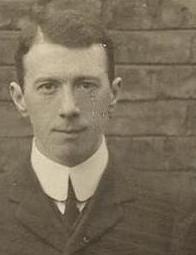John Charles Grant Ledingham facts for kids
Sir John Charles Grant Ledingham (born May 19, 1875 – died October 4, 1944) was an important British scientist. He was a pathologist and a bacteriologist. This means he studied diseases and tiny living things like bacteria that can cause illness. He was also a Fellow of the Royal Society, which is a big honour for scientists.
Contents
A Life in Science
Early Life and Education
John Ledingham was born in Boyndie, a small town in Scotland. His father, James Ledingham, was a church minister there.
John went to Banff Academy for his early schooling. After that, he studied at the University of Aberdeen. He earned several degrees there, showing he was a very dedicated student. He graduated in 1895, 1900, and 1902.
Becoming a Disease Detective
After university, John continued his training in Germany in 1902 and 1903. He then came back to the UK to do important research. He worked in laboratories at the University of Aberdeen and the London Hospital.
In 1905, he joined the Lister Institute. This was a famous place for studying how to prevent diseases. He started as an assistant bacteriologist. By 1908, he became the chief bacteriologist.
Serving During Wartime
During World War I, John Ledingham took a break from his work at the Lister Institute. He joined the Royal Army Medical Corps as an officer. He became a lieutenant-colonel in 1915.
He worked as a chief bacteriologist at King George Hospital in London. Later, in 1917, he became a special consultant in Mesopotamia. His job was to help fight diseases among the soldiers.
Leading the Lister Institute
After the war, John returned to the Lister Institute. He continued his important work there. In 1931, he became the director of the institute. He led this major research center until he retired in 1943. He also remained the chief bacteriologist during these years.
His Research Work
John Ledingham wrote or helped write about 30 scientific papers. His research covered many topics related to diseases. For example, he studied tiny particles called elementary bodies found in viral infections. He also researched a condition called experimental purpura, which involves bleeding under the skin.
He got married in 1913 and had a son and a daughter.
Awards and Honours
John Ledingham received many important awards for his scientific contributions:
- 1918 — He was given the C.M.G. honour.
- 1921 — He became a Fellow of the Royal Society (F.R.S.).
- 1924 — He was made a Fellow of the Royal College of Physicians.
- 1934 — He gave the special Herter Lecture at the Johns Hopkins Medical School in the United States.
- 1937 — He was given a Knighthood, which meant he was called "Sir John".


